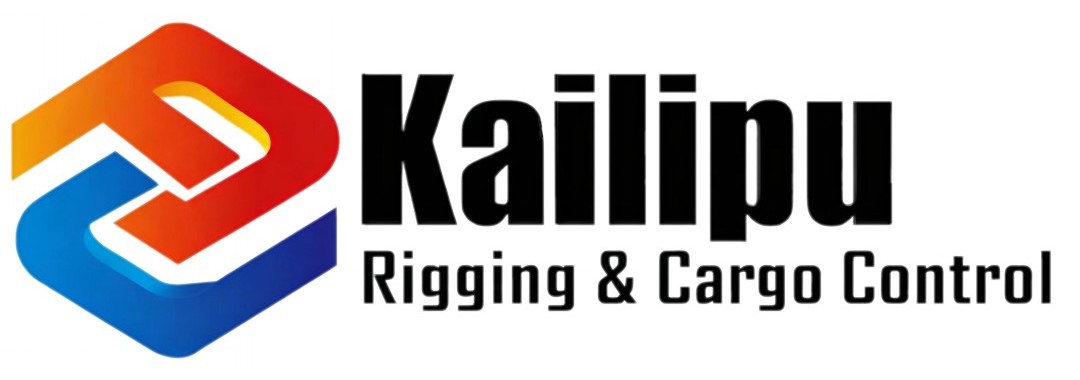How to Choose a Boat Anchor: 5 Proven Strategies for Maximum Stability
Choosing the right boat anchor is crucial for ensuring your vessel remains secure in various marine conditions. With so many types of anchors available, making the right choice can be daunting. This guide provides five proven strategies about how to choose a boat anchor for maximum stability and peace of mind.
1. Understand the Different Types of Anchors
The first step for how to choose a boat anchor is understanding the different types available and their specific applications. Here are the most common types:
Fluke (Danforth) Anchor
- Best For: Soft bottoms like sand or mud.
- Features: Lightweight, good holding power in soft seabeds.
- Drawback: Less effective in rocky or grassy areas.
Plow (CQR) Anchor
- Best For: Diverse seabed conditions including sand, mud, and gravel.
- Features: Versatile, strong holding power.
- Drawback: Heavier and can be more difficult to store.
Claw (Bruce) Anchor
- Best For: Various bottom types including sand, mud, and rock.
- Features: Easy to set, good holding power.
- Drawback: Bulkier, which may be an issue for smaller boats.
Mushroom Anchor
- Best For: Small boats, permanent moorings in mud or silt.
- Features: High holding power in soft bottoms.
- Drawback: Not suitable for large vessels or varied seabeds.
Delta Anchor
- Best For: Mixed seabeds.
- Features: High holding power, self-righting design.
- Drawback: May be more expensive than other types.
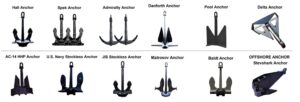
In addition to the above styles, common styles include Pool Anchor, Stephen Anchor, D-Hong Anchor, Light Weight Anchor, Matrosov Anchor, Offdrill Anchor, Spek Anchor, Admiralty Anchor, Single fiuke Anchor, ABC Hall Anchor, Japan Stockless Anchor, Japan Stock Anchor, Beldt Stockless Anchor, etc.
2. Consider the Bottom Conditions
The second consideration on how to choose a boat anchor is the bottom conditions of the boat. The type of seabed where you will most frequently anchor plays a significant role in anchor selection. Anchors are designed to work best in specific bottom conditions:
- Sand and Mud: Fluke and Delta anchors are excellent choices.
- Rock and Coral: Claw anchors perform well due to their ability to grip irregular surfaces.
- Gravel and Mixed: Plow anchors are versatile and effective.
By matching the anchor type to the seabed, you ensure maximum holding power and stability.
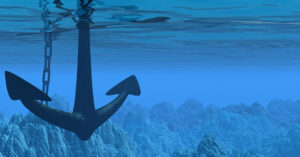
3. Match the Anchor to Your Boat Size
The third consideration on how to choose a boat anchor is your boat size. The size and weight of your boat are critical factors in choosing the right anchor. An anchor that is too small won’t hold your boat securely, while an excessively large anchor can be cumbersome and difficult to handle. Manufacturers typically provide guidelines based on boat length and weight to help you select the appropriate anchor size.
For example:
- Small boats (up to 27 feet): Fluke anchors are usually sufficient.
- Medium boats (28-35 feet): Plow or Delta anchors offer reliable holding power.
- Large boats (over 36 feet): Claw or heavy-duty Plow anchors provide the necessary stability.
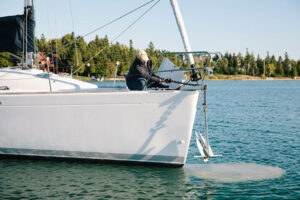
4. Evaluate the Holding Power
Holding power is the anchor’s ability to resist being dragged under different conditions. It is influenced by the anchor’s weight, design, and the type of seabed. Always choose an anchor with adequate holding power for your boat and typical anchoring conditions.
Consider factors such as:
- Wind: Higher winds require anchors with more holding power.
- Current: Strong currents demand anchors that can grip the seabed firmly.
- Boat Activity: Anchors for frequently active boats (e.g., fishing, cruising) should reset easily if they become dislodged.
5. Assess Storage and Handling
Practicality matters when it comes to storing and handling your anchor. Ensure that your boat has adequate storage space for the anchor and that it is easy to deploy and retrieve. Some anchors are bulkier and may require a windlass for handling, especially on larger boats.
Storage Tips
- Anchor Lockers: Ensure your boat’s anchor locker is large enough to store the anchor and rode.
- Bow Rollers: Consider installing a bow roller for easier deployment and retrieval.
- Anchor Chain: Use a combination of chain and rope to maximize holding power and ease of storage.
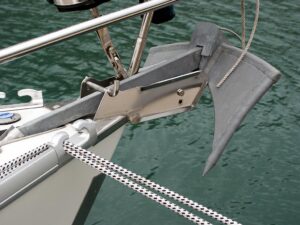
How to Choose a Boat Anchor
How to Choose a Boat Anchor? Choosing the right boat anchor involves understanding the different types of anchors, considering the seabed conditions, matching the anchor to your boat size, evaluating the holding power, and assessing storage and handling. By following these five proven strategies, you can select an anchor that provides maximum stability and ensures the safety of your vessel. A well-understanding of how to choose a boat anchor not only gives you peace of mind but also enhances your overall boating experience, making every voyage more secure and enjoyable.
Your Premier Source for Professional Boat Anchor Supplies in China
As a leading supplier of professional marine mooring supplies in China, we are committed to delivering the highest quality products that ensure the safety and stability of your vessels. Our extensive range of marine and mooring equipment, including durable anchors, chain and wire ropes, shackles, and reliable rigging and lifting equipment, is designed to withstand the harshest marine environments. We pride ourselves on our rigorous quality control processes, innovative design solutions, and exceptional customer service. By choosing our supplies, you are investing in the reliability and performance that maritime professionals worldwide trust and depend on.
Browse our website or contact our team at [email protected], Kailipu will work with you to make better marine mooring accessories components.
